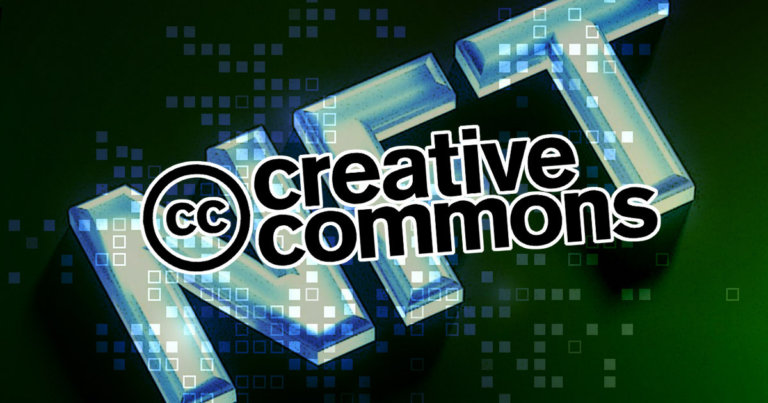 Here is all you need to know about creative commons licenses and how they affect NFTs
Here is all you need to know about creative commons licenses and how they affect NFTs Here is all you need to know about creative commons licenses and how they affect NFTs
NFT ownership can come in many forms, from giving owners complete copyright to having creative commons licenses so they can be used freely.

Cover art/illustration via CryptoSlate. Image includes combined content which may include AI-generated content.
Non-fungible tokens (NFTs) give us digital ownership. However, there is a lot of confusion around what that means in terms of owning something.
NFT projects can choose to provide several different copyright options to holders of the NFTs, depending on the project’s goal or the legal issues it intends to tackle. We’ll explore these options and focus on Creative Commons 0.
What is CC0?
Creative Commons 0 (CC0) is an intellectual property standard adopted by significant NFT projects like Mfers, Nouns, Blitmaps, and CrypToadz. It stands in contrast to copyright laws.
What are copyright laws?
As a form of intellectual property law, Copyright Law grants monopoly protection for original works of authorship, including musical, artistic, and literary works. Copyright law in the U.S. was first established in 1790, with the latest revision coming in 1976 to protect the ownership rights of creators.
Copyright laws go into effect automatically with the current version, regardless of artists’ choices. While created to safeguard artists, copyright is challenging to navigate as an individual, so it does not only protect artists (as expected), but some critics say it gives more power to big corporations that know how to utilize and navigate these laws for themselves.
Roger that, but how does this relate to NFTs?
Thanks to blockchain, artists have a low-cost method to assert their ownership over their artworks online while they get to keep them in the public domain for anyone to view. The trend with NFTs is in contrast to private collectors buying works and keeping them behind closed doors and is more similar to a free museum showcasing art.
Current copyright laws were written when there was no blockchain or NFTs, making it challenging to figure out the corresponding rights of NFTs in the real world. Going the CC0 route alleviates legal copyright concerns, but it might also be that CC0 makes more sense for some NFTs.
In web3, value creation and capturing revenue operate differently than in web2. We roll our eyes at intermediaries and gatekeepers as web3 hopes to create a space open for everyone, not a walled garden. CC0 is the ultimate door-opener. So by network effects, projects could reach a wider audience with CC0.
You might have seen some decentralization maxis going all-in on CC0. It also comes from the alignment CC0 has with the libertarian ethos of Web3.
Can you give me an example?
Of course! Let’s compare CryptoPunks and Bored Ape Yacht Club, as IP was a big point of discussion a couple of months (years? a lifetime?) ago.
Creator of CryptoPunks, Larva Labs initially didn’t give rights to the owners of NFTs. It restricted its holders from creating derivative products or using its branding, probably to preserve its own. Owners could use their Punks for “personal, non-commercial uses.” So Larva held on to IP rights for themselves.
The creator of BAYC, Yuga Labs, granted Bored Ape holders commercial rights to create derivative products as they pleased. Owners can utilize their apes as their character, open burger joints, form music bands, or even sign their Apes to agencies. Yuga Labs later acquired CryptoPunks and gave owners of the NFTs full ownership rights.
Some could give limited rights; for instance, a project could allow $1 million in revenue from commercializing the individual NFTs per year.
CC0 transcends the intellectual property debates around Larva and Yuga Labs. CC0 has no rights reserved.
So, what is CC0? What do you mean by no rights reserved?
Creative Commons 0 is the most liberal copyright licensing where the creator waives any copyright ownership rights of the artwork. This means anyone can use the work for non-commercial and commercial purposes. Anyone can create without giving attribution to the original artist. When an artist issues CC0, creators declare their work as belonging in the public domain.
Let’s take a look at mfers. Sartoshi created Mfers in November 2021. It is a community-led project with the creator only supporting — usually by retweeting — but not working on any part of the project. There was no roadmap, no rarity link, no official Discord.
In his explanatory Mirror post, Sartoshi said:
“There is no king, ruler, or defined roadmap — and mfers can build whatever they can think of with these mfers. i didn’t know what that would ultimately look like–and that was the point…nobody does. mfers don’t need sartoshi’s approval or looking over their shoulder as they experiment and build. My view of what is most valuable for me to offer to mfer holders is to amplify the best of their ideas and creations to reach vastly greater audiences…”
This passage encapsulates the essence of CC0s. Everyone can use any mfer in movies, artworks, or music they create. Mfer community has been building 3D mferverse, merchandise, and a bazillion derivative projects, including 1/1 artworks.
Sartoshi said:
“mfer arms aren’t just reaching out to computers — it’s piano keys, paint brushes, beer cans, car steering wheels, spaceships, poker tables, and everything else mfers do.”
Sartoshi gave the tools and a blank canvas for creative freedom.
Here is my mfer in a derivative work from mfers in paradise collection.

So, should I make my project CC0?
It depends on the value you want to create, the nature of the project, and your goals as the creator. If you want your project to spark innovation and a million derivatives, yes! If you want people to be able to build a brand around and monetize it, then perhaps no. IP is critical if you wish for individuals to build brands that will add to the project’s own. Value could be created by guarding and utilizing IP in new ways and opening the doors for everyone to make their creations.
Pros
A CC0 project can go anywhere. Single creator – one person sailing the ship – means a set destination and path. People on the boat don’t have to do anything but wait for the destination. CC0 distributes the power and responsibility of the brand to everyone else.
People need to come together and figure out where they are going and how they will get there. CC0 allows the community to develop IP together, and all the derivatives and spinoffs expand the original project’s cultural charge, stance, and relevance.
Cons
NFTs premise digital ownership; that’s why we bought into this idea. So CC0 could bring scarcity and value questions. What is the point of owning my character if anyone can use it and make money? NFTs were supposed to give ownership AND create scarcity. While CC0 creates other value systems, this also is an acceptable view.
What can I do with a CC0 NFT that is not allowed under non-CC0?
The main difference between CC0 and non-CC0 licensing formats is simply the ability to commercialize the project. With CC0, anyone can commercialize the collection – creator of the project, owners of the individual NFTs, or the public.
People who don’t have a mfer can create a mfer derivative project, sell, and make money if they’d like to. In line with this reasoning, mfer community is fully open. Mfers don’t expect people to hold mfers to chat in discord, come to IRL events, or make their own art.
Sartoshi loves to reply to people sharing “I’m finally an mfer” with an “always have been” tweet, as it encapsulates the ethos of CC0.
and maybe u always have been 🎧⌨️🚬
— sartoshi (@sartoshi_nft) December 13, 2021




















































